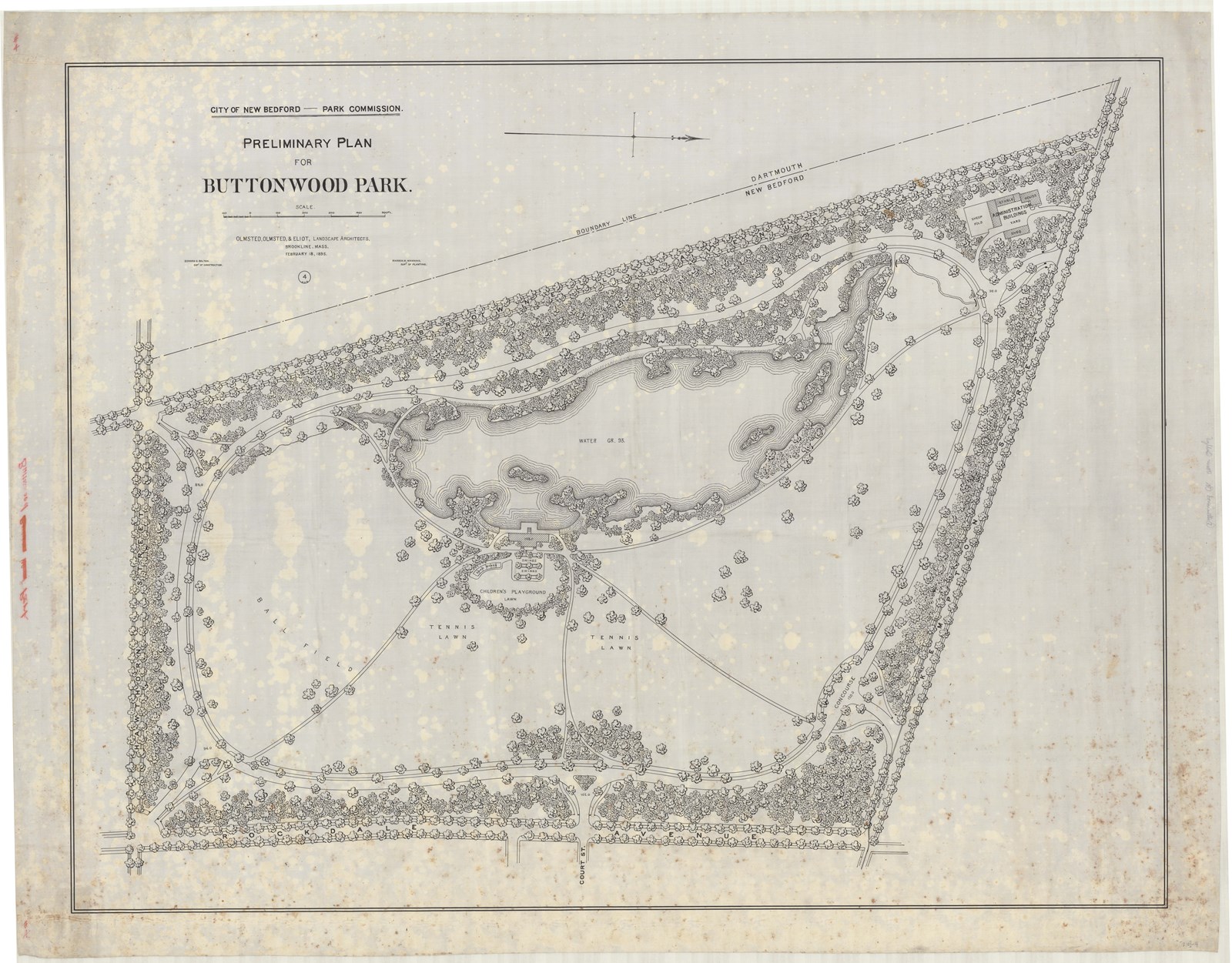Last updated: June 5, 2024
Place
Buttonwood Park

Olmsted Archives
Quick Facts
Location:
New Bedford, MA
Significance:
Olmsted Designed Landscape
MANAGED BY:
In 1895, Olmsted, Olmsted and Eliot were hired to develop a master plan for Buttonwood Park in New Bedford, Massachusetts. Firm partner Charles Eliot prepared the preliminary plan for the park on land at the center of the city. Eliot’s plan included enlarging the 6-acre pond and creating an expansive meadow leading up to the edge of the water. Eliot also suggested space for tennis and ball games, a children’s playground, and a carriage road around the site that would limit vehicular traffic within the park.
Both lawn and pond expansion were partially implemented on Buttonwood Park’s 97-acres of land. With its deciduous tree, the open lawn serves as a gathering space while the pond allows for boating, swimming, fishing, and ice skating. While the baseball diamond was added in 1896 and tennis courts in 1909, various other facilities were placed in the park, like a zoo, which submerged the natural setting with buildings.
Source: "Burronwood Park," The Cultural Landscape Foundation
For more information and primary resources, please visit:
Olmsted Research Guide Online
Olmsted Archives on Flickr
Olmsted Online
Both lawn and pond expansion were partially implemented on Buttonwood Park’s 97-acres of land. With its deciduous tree, the open lawn serves as a gathering space while the pond allows for boating, swimming, fishing, and ice skating. While the baseball diamond was added in 1896 and tennis courts in 1909, various other facilities were placed in the park, like a zoo, which submerged the natural setting with buildings.
Source: "Burronwood Park," The Cultural Landscape Foundation
For more information and primary resources, please visit:
Olmsted Research Guide Online
Olmsted Archives on Flickr
Olmsted Online
